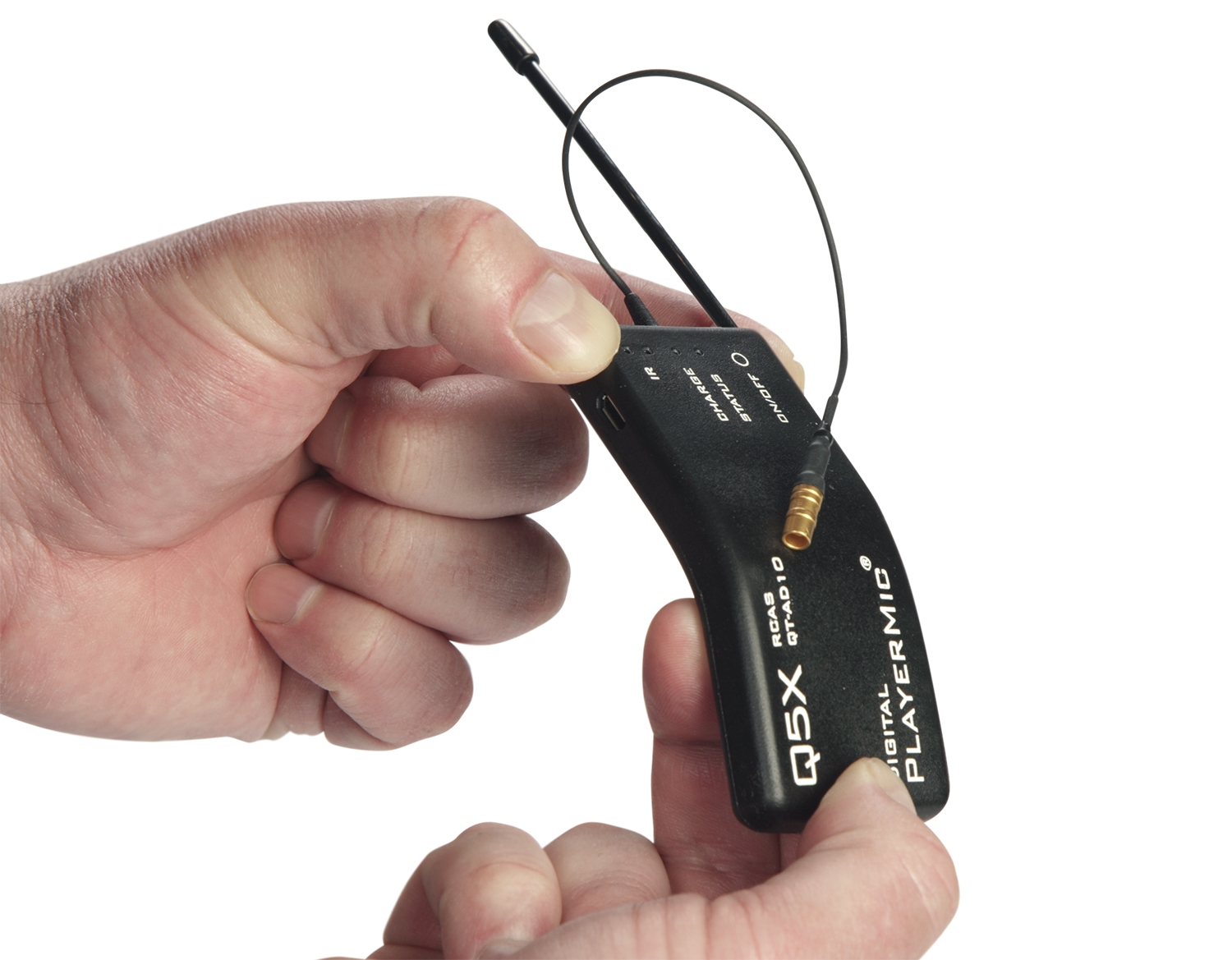Tech Focus: Bodypacks, Part 1 — Wireless Transmitters Reflect RF-Industry Challenges
Spectrum changes, chip shortages, and encryption are major issues
Story Highlights
They’re small and getting smaller. They’re designed to be virtually invisible. They’re light enough to be measured in ounces and grams instead of pounds and kilos. But wireless bodypack transmitters have become both central to audio capture for broadcast sports and emblematic of the broader changes in the wireless environment.
Bodypack transmitters were on the front lines in the industry-wide adaptation to two rounds of critical spectrum reductions over a decade, finding ways to accommodate the losses first in the 700 MHz and then the 600 MHz ranges. Then they had to adapt to a shift from analog to digital formats, driven in part by those spectrum changes and by the demand in televised sports for more and enhanced encryption capability. All the while, brands looked for ways to differentiate products in a niche but crowded market, adding such features as audio recording, remote control, and battery-status functionality. The only other product that has so many demands on it and still fits in the palm of your hand might be an iPhone.
The Supply-Chain Effect
In the past year, bodypack transmitters were affected when supply-chain problems made sourcing critical parts, such as FPGA chips, increasingly difficult.

Lectrosonics’ Karl Winkler: “There might be entire ranges of chips that we need that might not be around for a long time. Or ever again.”
“Chips are at the heart of digital technology, and that’s where the problem is,” says Karl Winkler, VP, sales and marketing, Lectrosonics, noting that the shortages were pre-pandemic, following a disastrous 2019 fire at the AKM chip factory in Japan. COVID-19 simply exacerbated what was becoming an issue for pro-audio manufacturers. For instance, Yamaha had already announced a slowdown in its audio-systems manufacturing as a result of a lack of chips.
According to Winkler, Lectrosonics has had to redesign some of its processing to work around the chip shortage, using other materials and parts. The shortage has also resulted in two price increases this year alone, with a third possible next year. In the past, he says, price increases were rare and spread out over years. And, instead of the additional revenue going to R&D and product development, such as the recording capability the company added to its bodypacks two years ago, the increases will go to cover the higher costs of all types of parts impacted by the supply-chain disruption.
Of longer-range concern is the possibility that, in some cases, chips used in pro-audio products aren’t the ones that offer the best ROI for chip makers, which instead concentrate on the ones with the largest market demand.
“In a situation like this,” Winkler says, “you focus on making what brings you the highest volume and best return. They’ll have to make tough decisions about what to make, and there might be entire ranges of chips that we need that might not be around for a long time. Or ever again.”
Encrypted Audio
Bodypacks’ main issues pre-COVID had been more somatic: size, weight, shape, and form factor. Those parameters were dependent almost entirely on the physical attributes of the batteries used to power bodypacks. At this point in the product’s evolution, any changes are essentially trade-offs: further weight and size reductions equal lower battery power levels and endurance.
The other major development in product design has been the addition of encryption capabilities. Encryption of digital signals has become a significant issue in wireless communications particularly in sports, where coaches and athletes need to discuss strategy and tactics on the field and television networks want to get some of that backstage dialog on the air.
Encryption is available to sports customers in various levels, or “keys,” according to the nature of what’s being communicated. The most secure keys are those that allow only voice exchanges between devices, such as microphones on beltpacks and cameras, sharing the encryption key.
But that information has various uses. For instance, between an NFL coach and quarterback, the signals have to be fully encrypted to prevent disclosing tactical information ahead of critical plays. On the other hand, an NBA coach’s bodypack transmitter is there to pick up the same sorts of tactical disclosures but they won’t be used for broadcast until after a play is over, when they’re heard on-air as part of an EVS replay.

The Q5X QT-AD10 digital wireless transmitter is the product of a collaboration between Q5X and Axient.
Last year, Shure and Q5X announced collaboration on new wireless transmitters that combine Q5X’s hyper-compact form factors and safety-conscious industrial design with Shure’s widely used Axient Digital RF technology. Axient’s digital operation allows versions of Q5X’s primary models — CoachMic, PlayerMic, AquaMic — to function as digital devices, conferring key features of signal encryption and improved spectrum efficiency to Q5X’s diminutive form factors. The result of the collaboration, the Q5X QT-AD10 Axient digital wireless transmitter, which each company sells through its own distribution channels, also incorporates Q5X’s Remote Control Audio System (RCAS) remote-control functionality: on/off, frequency, mic offset, RF power, groups, battery level.
Q5X CEO Paul Johnson says that confidence in encryption and the growing ubiquity of wired players and officials has been creating more opportunities for sound from fields of play. For instance, he says, NHL referees have been wearing two separate transmitters — the usual RefMic with its mute switch for private conversations on the ice prior to announcement and a PlayerMic that can be turned on and off remotely by the broadcaster — essentially turning the refs into what he calls “floating microphone stands,” bringing sound capture even closer to the ice.

NBA’s Paul Benedict sees fans arriving at basketball games early to hear pregame on-court conversations pumped through the PA system.
Another burgeoning application for bodypacks has been for more informal back-and-forth chatting between athletes and, for example, announcers before and even during games. In fact, during the “League Perspectives” panel at the recent SVG Summit in New York, NBA VP, Broadcasting Content Management, Paul Benedict commented that fans are coming to basketball games early just to hear pregame on-court conversations pumped through the PA system.
“They’re using a combination of the PlayerMic on players who are going to be miked up during the game anyway and a CoachMic they’ll put on one who’s not going to be miked during the game,” said Johnson. “With an IFB in place, it’s easy to have two-way conversations.”
It’s also an example of how a pro-audio technology developed specifically for use on the broadcast side has been able to move through the broadcast barrier and used to deepen engagement with fans.
Click here for Tech Focus: Bodypacks, Part 2 — Wireless Transmitters Are Smaller Than Ever, More Flexible.
